I wrote this article in Japanese and translated it into English using ChatGPT. I also used ChatGPT to create the English article title. I did my best to correct any translation mistakes, but please let me know if you find any errors. By the way, I did not use ChatGPT when writing the Japanese article. The entire article was written from scratch by me, Saikawa Goto.
Introduction
Movies and books covered in this article

Three takeaways from this article
- If the “Big Bang” happened, then “the mass of the universe” must be much more.
- A vacuum that should have nothing in it has energy.
- Unobservable “virtual particles” are appearing and disappearing.
Self-introduction article


Published Kindle books(Free on Kindle Unlimited)
“The genius Einstein: An easy-to-understand book about interesting science advances that is not too simple based on his life and discoveries: Theory of Relativity, Cosmology and Quantum Theory”
“Why is “lack of imagination” called “communication skills”?: Japanese-specific”negative” communication”
The quotes in the article were translated using ChatGPT from Japanese books, and are not direct quotes from the foreign language original books, even if they exist.
The Difficulty of Discussing the “Beginning of the Universe” in the West
This book is a work that compiles research on the “beginning of the universe” that is currently understood in modern science by one of the top physicists in America who has also written many popular science books. You may have heard that the universe began with the Big Bang, but not many people would understand how it happened. This book provides a detailed explanation of that.


At the beginning of this book, it discusses how “beginning of the universe” is perceived in Europe and America. In heavily Christian Western societies, the “beginning of the universe” in scientific research is often associated with “creation of the world” in religion, which can lead to many difficulties.

The subtitle of this book is “Why There Is Something Rather than Nothing,” and the author regrets it.
When scientists use the word “why,” it means “how.” However, in cosmology, when they use the word “why,” it is often interpreted as referring to the “first cause,” which means “God.” Because of that, they are more likely to be attacked from the religious side.

Also, the word “nothing” carries a difficult problem.
In this book, the author claims that “the universe began from nothing.” However, making such a claim invites criticism, such as “if something is born from it, can it really be called ‘nothing’?” or “even if there is ‘nothing,’ there is still a possibility of ‘something,’ so it is not ‘nothing,’ right?”

In this book, a cautious definition of “nothing” appears frequently. Depending on how much you can be convinced by the claims of this book, I believe that if you follow the author’s argument carefully, you will feel that “the universe was indeed born from nothing.”
However, it is certainly a difficult problem to consider what “nothing” really means. Even if you understand the author’s argument, some people will still think, “If that’s the case, then it’s not ‘nothing’.” If ignoring the scientific definition, I think this is a matter of “personal values”.
Thus, the “beginning of the universe” often sparks debates.

Why did the “Big Bang” Happen When There was “Nothing”?
New Mysteries About “the Mass of the Universe” Brought by the Observation that Proved the “Big Bang”
Let’s start by briefly discussing the “Big Bang”.

The idea of “Big Bang” was born from a discovery by Hubble (who you may know from the “Hubble Space Telescope”). In 1929, he made a groundbreaking discovery that overturned the common sense of the time, stating that “the universe is expanding.”

At the time, most scientists, including Einstein, believed that “the universe is static and unchanging from the past to the future.” However, with the discovery that “the universe is expanding,” they had no choice but to think that “the smaller the size of the universe if we go back in time by rewinding the clock.” Pushing this idea further leads to the idea that “the universe must have started from something like a tiny point,” which was the prototype of the “Big Bang Theory.”

The idea of the “Big Bang” had many opposing scientists, including Einstein, but survived and was eventually proven by the observations of the “cosmic microwave background” by WMAP (Wilkinson Microwave Anisotropy Probe). The cosmic microwave background contains information about the early universe, and its observations matched the predictions of the “Big Bang.”
Furthermore, the observation of the cosmic microwave background also revealed the “shape” of the universe. There were three possibilities for the shape of the universe: “open universes,” “closed universe,” and “flat universe.” However, WMAP’s observation showed that the universe we live in is a “flat universe.”

However, this can also lead to a new problem.
Scientists can calculate how much mass, including galaxies and galaxy clusters, is needed in each case of “open universes,” “closed universe,” and “flat universe.” In other words, if we know the mass of the universe, we can determine its shape. On the other hand, modern technology allows us to measure the mass of the universe in which we live.
Since we now know we live in a “flat universe” based on the WMAP observation, the mass of the universe we live in must fall within the range of “mass required for flat universe.” Otherwise, it would be a problem.

However, these two values were completely different. Just how different were they? It was found that “the mass of the universe” that we inhabit is only about 30% of the “mass required for a flat universe”.
In other words, theoretically, we should not be able to exist in a “flat universe”. This is because we are short about 70% of the “mass of the universe” needed to create a “flat universe”.

However, we actually live in a “flat universe”. This means that we have no choice but to think that “there is still unknown ‘mass’ in this universe.” This mysterious mass is currently called “dark energy”. Of course, its true identity is unknown for now.
By considering this “dark energy,” we can explain “why the universe can be born from ‘nothing’.” But here let’s talk about another story a bit: the famous story of the genius Einstein’s “greatest mistake” in his life.

The Famous “Mistake” of Einstein and its Great Revival
As I mentioned earlier, scientists used to believe that the universe was static, and Einstein was one of them who strongly believed so.
Interestingly, even before Hubble observed the expansion of the universe, Einstein had predicted it from his own “Theory of Relativity” equations. It means that solving the equations of the theory leads inevitably to the conclusion that “the universe is expanding.” If Einstein had announced this prediction, he would have been evaluated for having predicted it before Hubble’s discovery. However, since Einstein believed in a static universe, it should have been a serious situation for him.


So Einstein decided to modify his equation. He added a term called the “cosmological term” to the Theory of relativity equation, which incorporated “repulsion” into the equation.
To understand “repulsion”, imagine walking your dog on a leash. Even if your dog tries to run off in a certain direction, you can hold it back by pulling on the leash. The force of pulling is what I call “repulsion”.

Einstein thought that if there was a force pulling the universe to expand and an equal force of the same magnitude pulling it back, the universe would be stationary and he added the “cosmological term.”
If you know that the universe is expanding, you might think that Einstein manipulated his equation to fit his own beliefs. That’s actually true, but the “cosmological term” he introduced gained some support. It seems that scientists at the time still hoped for a “static universe.”

After Hubble’s discovery, Einstein abandoned the “cosmological term,” but there were some scientists who reacted with disappointment, saying that “it was unfortunate to have to abandon the cosmological term.”
Now, there is a famous story about Einstein in which he reportedly said “the biggest mistake of my life” when he removed the “cosmological term” from his equation. Although this story is well-known and can be found in most books about the Big Bang, it is now believed to be a hoax by a mischievous scientist named Gamow. This is perhaps another example of “the price of fame.”

The “cosmological term” that Einstein introduced and then discarded has now made a comeback under the name “cosmological constant”. Although it has taken a slightly different form than what Einstein envisioned, it’s now believed that his decision to introduce it into the Theory of Relativity’s equations was actually correct. Why? Because this “cosmological constant” could possibly be the identity of “dark energy”, leading to this line of thought.
Einstein was a lucky scientist, as even his “failures” were talked about in this way.

Although it is not yet known whether the “cosmological constant” is the same as “dark energy”, there are proposals for what the “cosmological constant” corresponds to in reality. Einstein introduced the “cosmological term” by saying “it would be great if a force with such properties existed,” without thinking too much about the mechanism, but today the “cosmological constant” is thought to be “the energy that space itself possesses.” This “energy that space itself possesses” is called “vacuum energy”.

Let’s summarize the story so far.

During the study of the “Big Bang”, it was discovered that a mysterious mass, which had to be assumed to exist (dark energy), is a problem. Without knowing what this is, the “Big Bang” cannot be explained well. On the other hand, the “cosmological term” that Einstein once discarded is now resurrected as the “cosmological constant”, and it is considered to be “vacuum energy”, which is the energy that space itself holds.
In other words, if this “vacuum energy” is assumed to be the “dark energy”, the “Big Bang” can be explained well.
However, what is “vacuum energy” in the first place? Here, “space” refers to “vacuum”. When you hear “vacuum”, you might imagine “empty space”. That is, it means that “empty space has energy”.

What does that actually mean?
The “Antiparticle” Predicted by the Genius Dirac
So let’s deepen our understanding of the “antiparticle,” which is necessary to explain the “vacuum energy.”

An “antiparticle” is a particle with an opposite charge to a regular particle, and there exists a corresponding “antiparticle” for every particle. The first “antiparticle” discovered by humans is called a “positron,” but someone had actually predicted its existence years before it was observed.
That person was Dirac. However, he did not intend to predict the “positron” nor did he believe in it when he did.

At the time, there was a big problem in the scientific community. It was the mismatch between “Special relativity” and “quantum mechanics”. Both were magnificent and complete theories of 20th century physics. However, when scientists tried to apply them together, it didn’t work well and they were greatly puzzled.
What changed this situation was the genius Dirac. He completed the Dirac equation that fused “Special relativity” and “quantum mechanics”, astonishing the scientists of the time.

However, the Dirac equation had a tricky problem. Two solutions appeared when the equation was solved.
For example, let’s say one of the solutions is an “electron.” In this case, the other solution is “an electron opposite only in charge.” However, the existence of such a thing was not known at the time, and no one could understand that solution. Dirac himself seemed to have thought of it as something that only appeared when solving the equation and did not exist in reality.
However, several years later, something with exactly the same property that Dirac had predicted was discovered and named the “positron.” This is how the Existence of “antiparticles” whose charge is opposite to that of “particles” became known. By the way, “matter” is made from “particles,” and “antimatter” is made from “antiparticles.”
Explanation of “Virtual Particles” by Genius Scientist Feynman
Now, regarding these “antiparticles,” a brilliant scientist named Feynman had a groundbreaking way of understanding them. And through his explanation, it was shown that “vacuum is not ‘nothing’,” but let’s take a look at it step by step.


In the world of quantum mechanics, there is a fundamental principle called the “Heisenberg uncertainty principle.” Without going into detail, this principle allows for a certain situation that is normally prohibited. It says that it’s okay to exceed the speed of light if it’s for an incredibly short amount of time.
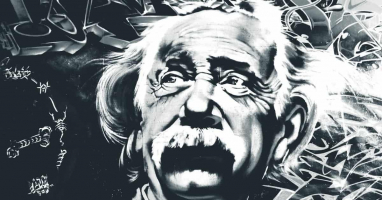
The “Theory of relativity” created by Einstein is based on the principle that “nothing can move faster than light.” This means that in our world, “light speed” is the speed limit and anything can’t go faster than that.
However, thanks to the “Heisenberg uncertainty principle,” it’s possible to go as fast as it can for a really short period of time. This “really short period of time” is called “Planck time” and it’s much shorter than we can imagine. It’s only 5.391 x 10 to the power of minus 44 seconds. But if it’s that short time, it can ignore the speed limit and go as fast as it wants.

On the other hand, in the “Theory of relativity”, it is said that “anything that moves faster than light behaves as if it were going back in time.” This is also a difficult-to-understand claim, but please bear with it.
And according to Feynman, this “thing that goes back in time” is the “antiparticle.”
Feynman developed his ideas further and ultimately summarized them in a famous diagram called the “Feynman diagram.” Please search online for more information (I’ve indicate a link to Wikipedia as an example).

Even if you look at this diagram, it’s not easy to understand Feynman’s claim, but anyway, from this revolutionary diagram that is said to have “transformed modern physics,” Feynman depicted a world that overturns the previous image of “vacuum,” stating that “particles and antiparticles are constantly appearing and disappearing in vacuum.” Looking at the diagram, it is said that they can somehow understand that “antiparticles are behaving as if they are reversing time.”
Now, from the “Feynman diagram,” they say they can tell that “particles” and “antiparticles” suddenly appear in “empty space.” These are called “virtual particles.” From research in quantum mechanics, it has been discovered that “pair production” occurs in “empty space,” giving birth to particles and antiparticles, and “annihilation” occurs when particles and antiparticles collide.
In other words, “vacuum” is not a space of “nothingness,” but a space where “virtual particles” repeat pair production and annihilation. These “virtual particles” can exist only for an instant and constantly appear and disappear.

The “virtual particle” cannot be directly observed because it can only exist for an extremely short time, less than the “Planck time”. According to the “Heisenberg uncertainty principle,” the behavior of matter below the Planck time is “in principle” unobservable, which means that we cannot observe the “virtual particle.”
Some may doubt the existence of such unobservable “virtual particle.” However, while we cannot observe it directly, its existence has been indirectly proven.
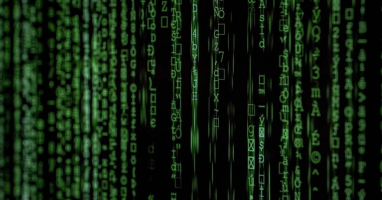
When experimenters performed a certain experiment, experimentalists noticed a slight discrepancy from the theoretical value. After repeating the experiment many times, they finally realized that they could not make accurate measurements without taking into account the effects of “virtual particles.” Assuming the existence of virtual particles, they carefully examined the experimental results, which matched the theoretical value with an accuracy of over one billionth. This is considered the most accurate measurement in all fields of science.
Even though virtual particles cannot be observed directly, we would have to believe in their existence since experiments without assuming them produce errors, while assuming their existence results in a terrifyingly precise match with the theoretical value.


And if virtual particles are constantly appearing and disappearing in a vacuum, it becomes possible to think that the vacuum can have energy. This is how we came to understand what “vacuum energy” is.
“Vacuum Energy” was Thought to be Zero
So far, I have explained what happens if the vacuum has energy using the concept of virtual particles. But now, let’s talk about the fact that “vacuum energy was originally thought to be zero.”

It was not until scientists had to consider the mysterious mass of “dark energy” from the WMAP observations that they began to think that “vacuum energy must have a non-zero value.” Although the true identity of “dark energy” is unknown, scientists began to believe that if it were “vacuum energy,” it would explain things well.
Then, what was the situation before scientists assumed the existence of “dark energy”?
At that time, there was a difficult problem called the “cosmological constant problem.” This problem was that if they consider the effect of virtual particles, vacuum energy would become extremely large. When scientists at the time calculated this taking into account the existence of virtual particles, the vacuum energy became an unbelievable number, “10 to the power of 120 times the energy of all matter in the universe.” Since “10 to the power of 10” is “10 billion,” “10 to the power of 120” is a number obtained by multiplying “10 billion” by itself 12 times. Anyone would think that this is impossible.

But the scientists of that time were optimistic about this situation. This is because in the world of science, there are often “enormously large numbers” that are neatly cancelled out by “negative numbers of exactly the same size,” resulting in zero. The scientists thought that even though the predicted value of vacuum energy was ridiculous, “although we don’t know the mechanism, because some negative number of the same size will probably appear from somewhere for some reason, and it will turn out that vacuum energy is zero.”
However, observations by WMAP showed that this was not the case. It became necessary to assume the existence of “dark energy,” and if its true identity is vacuum energy, then vacuum energy cannot be zero.

This is a very difficult situation. It is because that while it’s easy to imagine that big numbers can cancel out with equally large negative numbers to become zero, it’s hard to explain how big numbers can magically become a small positive value through some mechanism.
In fact, this discussion had been going on even before the WMAP observation. The author of this book had suggested the possibility that “vacuum energy is a non-zero positive value” before the WMAP observation. Scientists had dismissed the author’s claims as “madness” and “heresy,” but were amazed since the WMAP observation confirmed the author’s prediction.


But actually, the most surprised person was the author himself. While he certainly claimed that “vacuum energy is a non-zero positive value,” he didn’t actually believe his own claim. He said he wanted to just raise a question the situation where scientists took for granted that “vacuum energy is zero.” So when it was observed that vacuum energy was not zero, he was the most surprised of all.
By the way, the mechanism by which vacuum energy becomes a non-zero positive value is still not understood. The current situation is that since it was observed to be that way, we have no choice but to accept this reality.

In this way, it has come to be understood that the “vacuum” that was thought to be an empty space actually has virtual particles appearing and disappearing, and that “vacuum energy has a non-zero positive value.”
How did the Universe Come Into Being?
We are almost there. Finally, let’s explain “cosmic inflation”.
While many problems had to be overcome before the “Big Bang Theory” was accepted as correct, the question of “why the universe is so uniform” had also to be addressed. They say that the universe is “remarkably uniform” when viewed on a large scale.

For example, when you’re walking through a forest, you’ll see different flowers and creatures with each step, making it very diverse on a small scale. However, if you look at the forest from above, it will look almost the same everywhere, without much difference between places.
In the same way, the universe looks almost the same in every direction on a large scale.
It was a mystery how this “sameness” was achieved, but it was solved by the idea of “cosmic inflation,” which suggests that the universe rapidly expanded (exponentially) during the early stage of the Big Bang.

For example, when you slowly inflate a balloon, the uniformity of the balloon may be lost as bird droppings fall on it or someone draws on it. However, when you rapidly inflate it, it would expand uniformly before local changes occur, resulting in overall uniformity. Similarly, cosmic inflation suggests that the universe rapidly expanded, leading to its homogeneity.
And by combining explanation so far, we can understand how the “beginning of the universe” is explained in modern science. Let’s quote that passage.

Even if there is no matter or radiation in an empty space, it can have non-zero energy. According to the teachings of General relativity, a space with energy expands exponentially. As a result, even extremely small areas in the very beginning quickly became large enough to include the entire observable universe we see today.
In other words, we can imagine that “virtual particles that can only exist for a very short time can rapidly expand into a large region due to cosmic inflation.” This event happened at some point in the past, and we call it the “Big Bang,” which is the current conclusion.
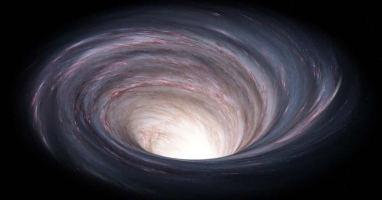
In this book, there is also a sentence like this:
Quantum gravity teaches us not only that the universe can arise from nothing (note that “nothing” in this case means no space or time), but rather it seems to indicate that the universe cannot help but arise. The state of “nothing” (no space or time) is unstable.

You might think that phenomena like the Big Bang are rare events that occurred with a miraculous probability. However, if it is true that “the state of nothing is unstable and ends up being the situation that something exists,” then the Big Bang is not a miraculous phenomenon. Certainly making such a claim will be criticized by those with religious beliefs.

Furthermore in this book, it is also suggested that physical laws vary for each universe. The author states that the universe was created “out of neither space nor time,” but he further believes that there was no “physical law” either.
In cosmology, there is a concept called “multiverse,” which suggests that there are various universes that we cannot perceive. If physical laws are randomly determined during the birth of the universe, each universe would be completely different. Although it is almost impossible to observe “other universes,” it is fun to imagine.

We are Living in a Special Era
Now, we’re done talking about the beginning of the universe. I’d like to touch on one more very interesting topic before we end.
It’s about the idea that “we are living in the only era where we can observe vacuum energy.” The author expresses this idea with the following impressive phrase.

We live in an extremely special era… It is the only era that we can prove through observation that we live in an extremely special era!
I won’t go into specifics here, but it seems that it is impossible to capture “vacuum energy” by observation even a short time after the “Big Bang” or long after the “Big Bang” has occurred.
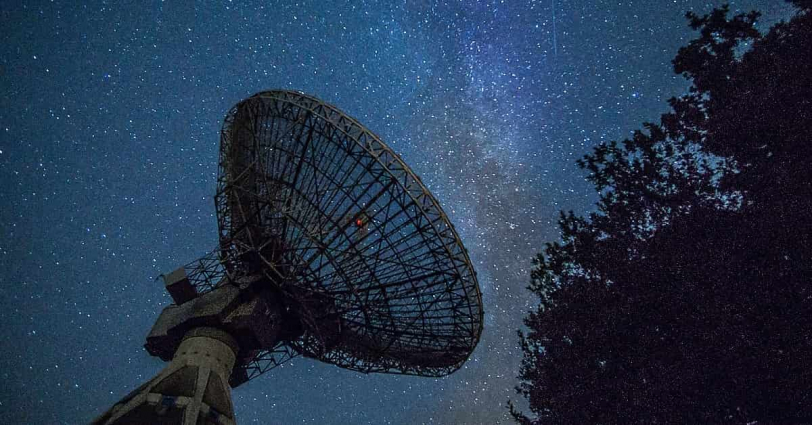
For example, even if there were astronomers on Earth 2 trillion years from now, they wouldn’t see anything when they looked through a telescope at the night sky. The fact that the universe is expanding means that all celestial bodies are moving away from the Earth, so after 2 trillion years, there will be nothing visible within the range visible from Earth.

When we put all these things together, we realize that the era we are living in now is a very rare era in which we can observe both “evidence of a Big Bang in the past” and “vacuum energy.”
In this book, the discussion of the “anthropic principle” is developed from this idea. The “anthropic principle” is an extremely crazy idea that ranks among the top in the history of science, which this article does not touch upon. The argument is also very interesting.

Conclusion
At the beginning, I talked about “nothing,” but how do you feel about the claim that “the universe was born from nothing” after reading this far?
Some people may think that it is not “nothing” because “virtual particles appear and disappear” in the vacuum. However, others may think that since “virtual particles cannot be observed in any way, it is okay to think that there is nothing.”

To repeat, an important point about the “beginning of the universe” is that “there was no ‘space’ even in the beginning of the universe.”
We tend to imagine that “there was a space, and virtual particles appeared there, and they expanded to become the universe.” However, before the “beginning of the universe,” there was no “space” at all. It means “nothing” in the sense that “neither space nor time nor physical laws existed,” so we should not confuse this point.
It is a challenging area to imagine, but it is fascinating to know that scientific understanding of the “beginning of the universe” has progressed this far.

Published Kindle books(Free on Kindle Unlimited)
“The genius Einstein: An easy-to-understand book about interesting science advances that is not too simple based on his life and discoveries: Theory of Relativity, Cosmology and Quantum Theory”
“Why is “lack of imagination” called “communication skills”?: Japanese-specific”negative” communication”

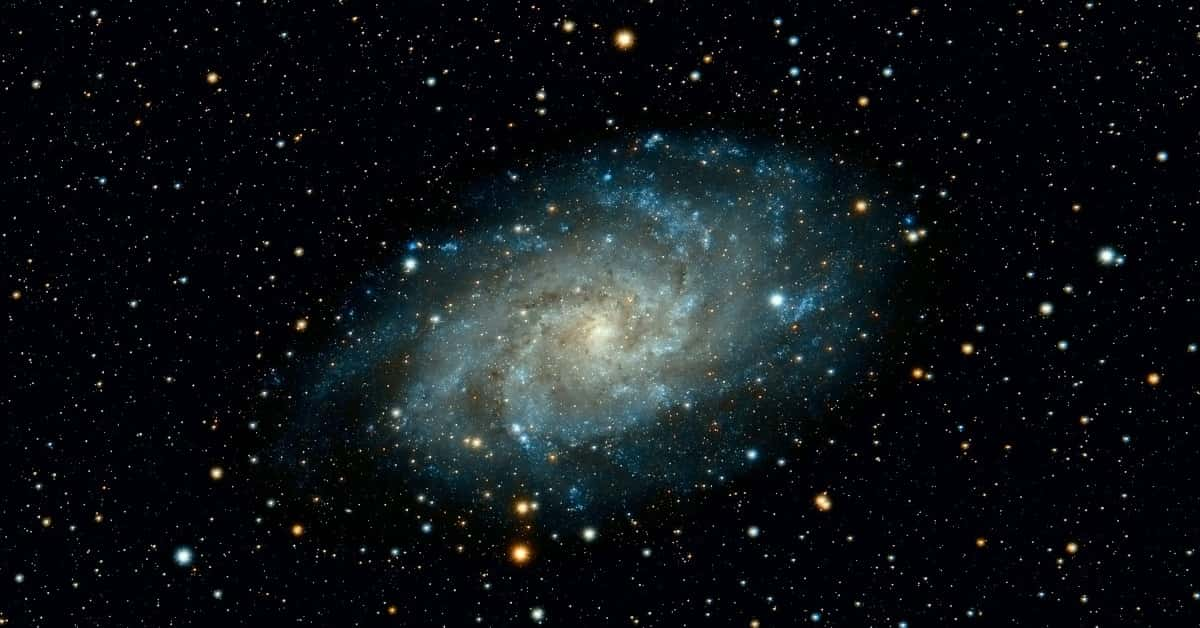






コメント